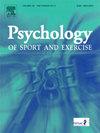Trails, traits, and mental states: Psychological differences between competitive and recreational sub-ultra and ultramarathon runners
IF 3.1
2区 心理学
Q2 HOSPITALITY, LEISURE, SPORT & TOURISM
引用次数: 0
Abstract
Psychological trait differences between ultrarunners (completing more than a standard 42.195 km marathon) and sub-ultrarunners (≤42.195 km) have been assumed, but not robustly examined. The current study investigated trait differences between competitive and recreational runners at sub-ultra and ultramarathon distances. Six hundred and eleven participants (334 recreational, 400 sub-ultrarunner) completed an online, anonymous survey assessing five traits: mental toughness (MT), grit, motivation, general self-efficacy (GSE), and personality. Bayesian ANOVAs indicated at least moderate evidence for differences within Distance for grit-perseverance of effort (PE) and intrinsic motivation (IM), such that ultrarunners scored higher than sub-ultrarunners. Similarly, we observed at least moderate evidence that competitive runners scored higher than recreational runners on overall grit, grit-PE, GSE, IM, and extrinsic motivation (EM). Interaction effects provided moderate evidence for greater MT and overall grit in competitive ultrarunners. Evidence for other differences were anecdotal or favoured the null hypothesis. This study represents a novel investigation into the psychological makeup of runners. We suggest that aspects of motivation, grit, and self-efficacy, but not personality, may differentiate competitive from recreational runners, and ultrarunners from sub-ultrarunners. The identification of these trait differences may benefit runners and coaches wanting to progress in distance or competition level, with broader application to workplace or academic contexts. Further research is needed to develop a clearer conceptualisation of mental toughness, and build upon the novel findings of this study, particularly given the paucity of literature that exists within this context.
路径、特征和心理状态:竞技和休闲亚超级马拉松和超级马拉松运动员的心理差异。
超长跑运动员(完成超过标准 42.195 公里的马拉松比赛)和亚超长跑运动员(≤42.195 公里)之间的心理特征差异一直被认为是存在的,但并未得到有力的检验。本研究调查了亚马拉松和超级马拉松距离的竞技跑者和休闲跑者之间的特质差异。61 名参与者(334 名休闲跑者,400 名亚超马跑者)完成了一项在线匿名调查,评估了五种特质:心理韧性(MT)、勇气、动力、一般自我效能感(GSE)和个性。贝叶斯方差分析结果表明,至少有中等程度的证据表明,超长跑运动员在毅力--坚持不懈的努力(PE)和内在动机(IM)方面存在差异,因此超长跑运动员的得分高于亚超长跑运动员。同样,我们观察到至少有中等程度的证据表明,竞技跑步者在总体勇气、勇气-不懈努力(PE)、GSE、IM 和外在动机(EM)方面的得分高于休闲跑步者。交互效应提供了中等程度的证据,证明竞技超长跑运动员的 MT 和总体勇气更高。其他差异的证据都是传闻或倾向于零假设。这项研究是对跑步者心理构成的一项新调查。我们认为,动机、勇气和自我效能等方面(而非人格)可能会区分竞技和休闲跑步者,以及超级跑者和亚超级跑者。对这些特质差异的识别可能会使希望在距离或比赛水平上取得进步的跑步者和教练受益,并更广泛地应用于工作场所或学术环境。特别是考虑到这方面的文献较少,我们还需要进一步研究,以形成更清晰的心理韧性概念,并在本研究新发现的基础上更进一步。
本文章由计算机程序翻译,如有差异,请以英文原文为准。
求助全文
约1分钟内获得全文
求助全文
来源期刊
CiteScore
6.40
自引率
5.90%
发文量
172
审稿时长
69 days
期刊介绍:
Psychology of Sport and Exercise is an international forum for scholarly reports in the psychology of sport and exercise, broadly defined. The journal is open to the use of diverse methodological approaches. Manuscripts that will be considered for publication will present results from high quality empirical research, systematic reviews, meta-analyses, commentaries concerning already published PSE papers or topics of general interest for PSE readers, protocol papers for trials, and reports of professional practice (which will need to demonstrate academic rigour and go beyond mere description). The CONSORT guidelines consort-statement need to be followed for protocol papers for trials; authors should present a flow diagramme and attach with their cover letter the CONSORT checklist. For meta-analysis, the PRISMA prisma-statement guidelines should be followed; authors should present a flow diagramme and attach with their cover letter the PRISMA checklist. For systematic reviews it is recommended that the PRISMA guidelines are followed, although it is not compulsory. Authors interested in submitting replications of published studies need to contact the Editors-in-Chief before they start their replication. We are not interested in manuscripts that aim to test the psychometric properties of an existing scale from English to another language, unless new validation methods are used which address previously unanswered research questions.

 求助内容:
求助内容: 应助结果提醒方式:
应助结果提醒方式:


